Woodpeckers captivate most birders due to their surprising nature. All about these birds seems to be fascinating, from their yearly migration to their movement from one environment to another, but many people know nothing about them.
Perhaps you’re wondering whether there are woodpeckers in North Carolina, munching on suet or pounding on trees in the woods. You might still catch a fleeting glimpse of them before they hide behind a tree trunk.
Hence, please continue reading to discover more about these fascinating species found throughout the state.
| Image | Name |
|---|---|
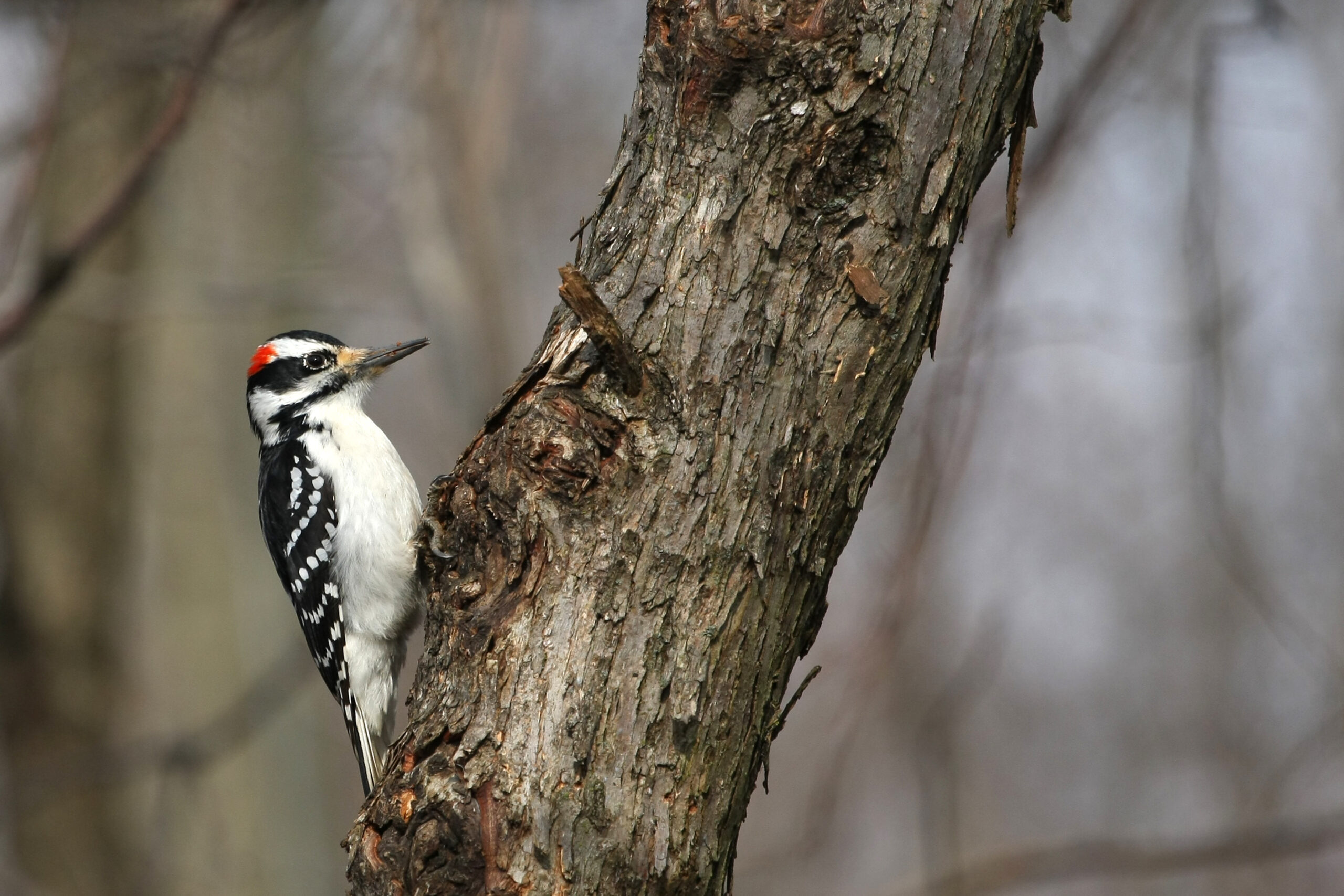 | Hairy Woodpecker |
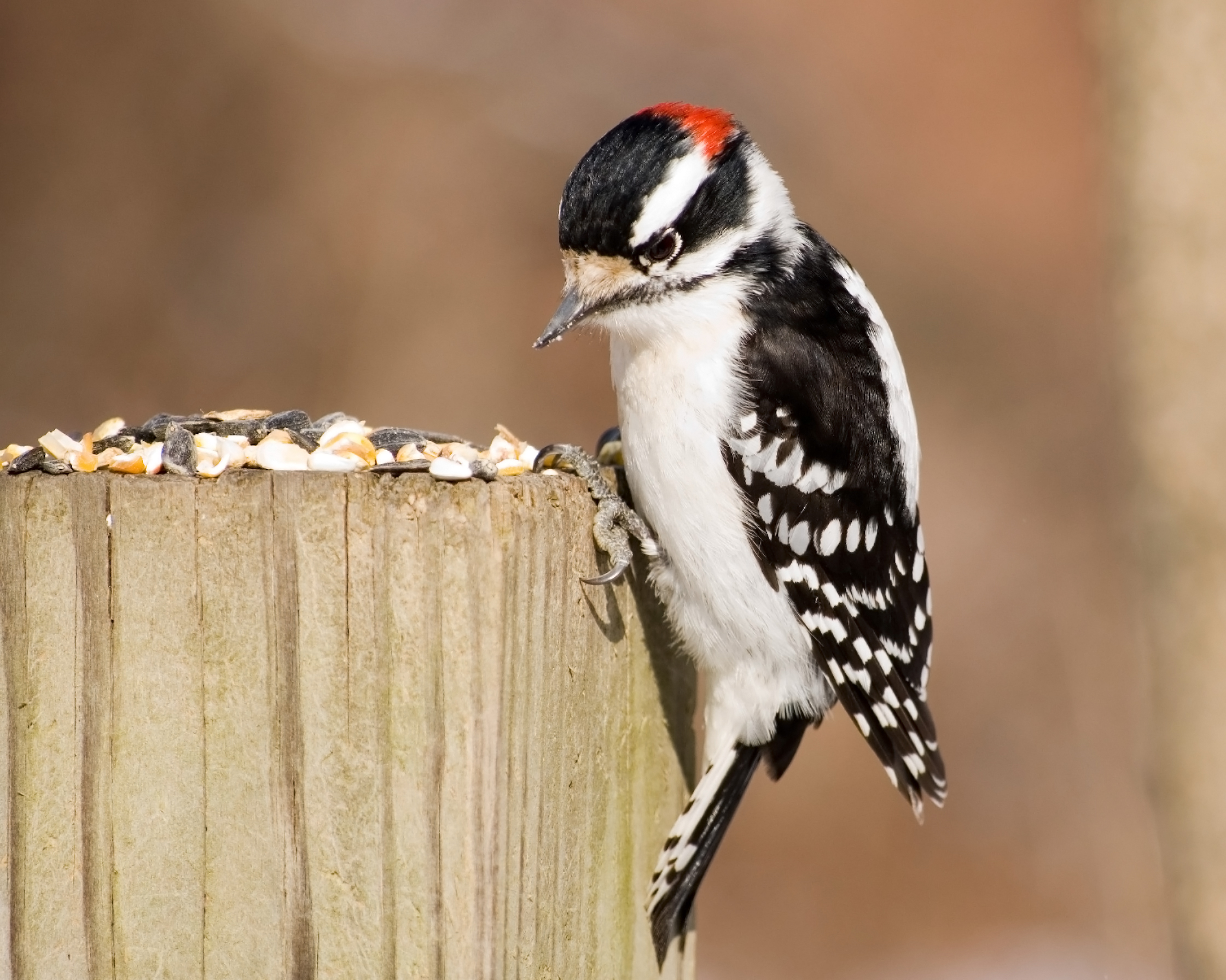 | Downy Woodpecker |
 | Red-bellied Woodpecker |
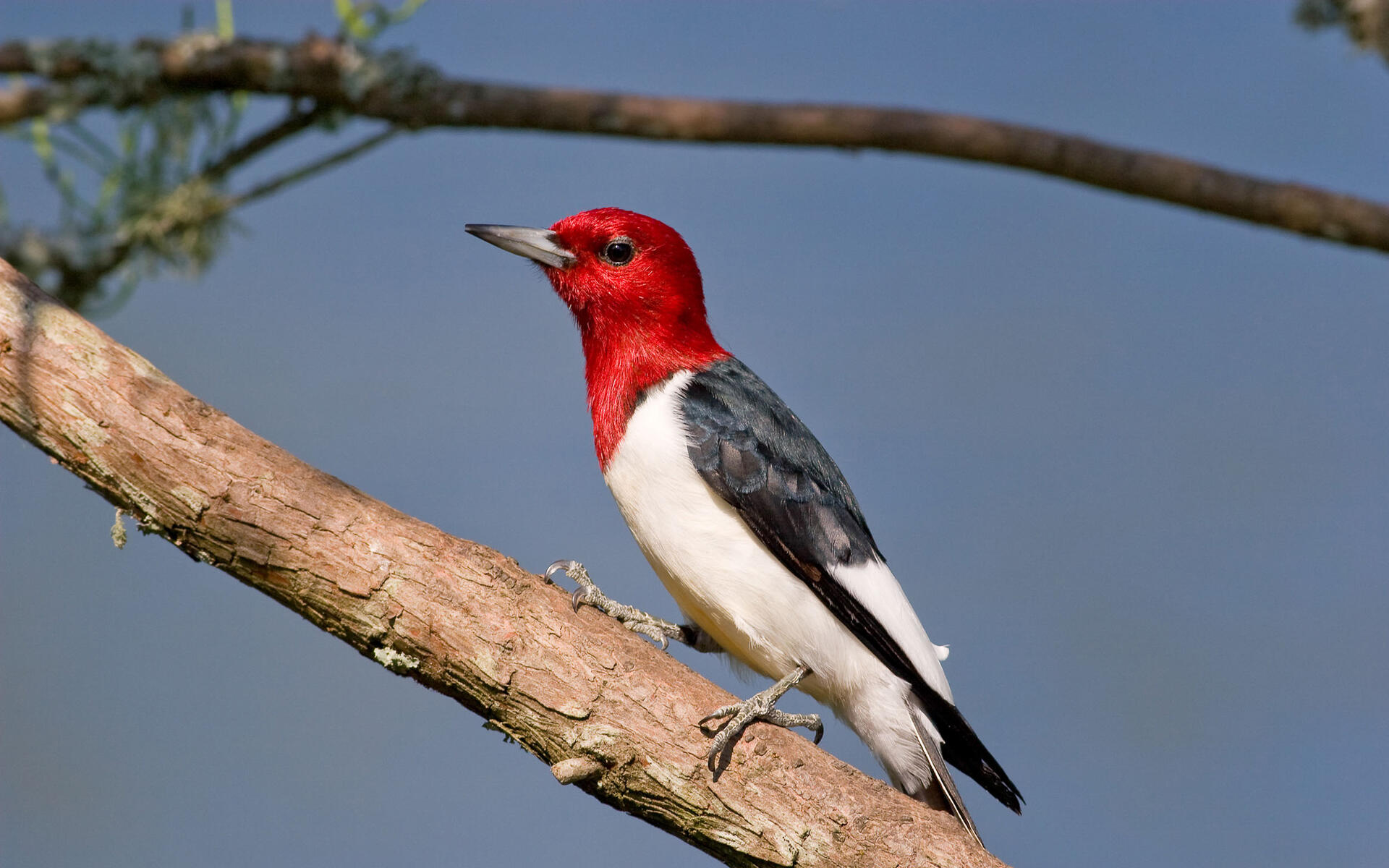 | Red-headed Woodpecker |
 | Pileated Woodpecker |
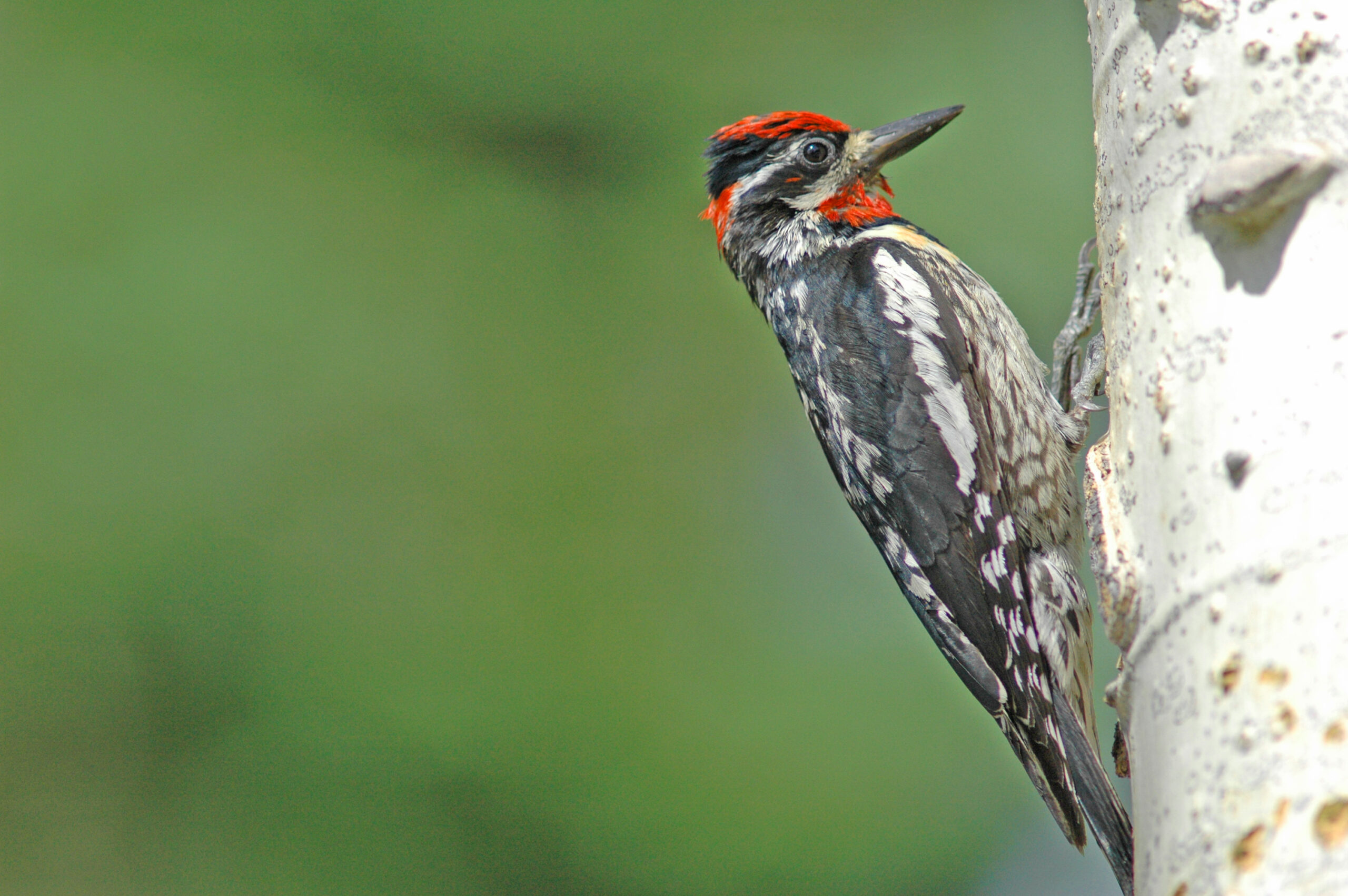 | Yellow-bellied Sapsucker |
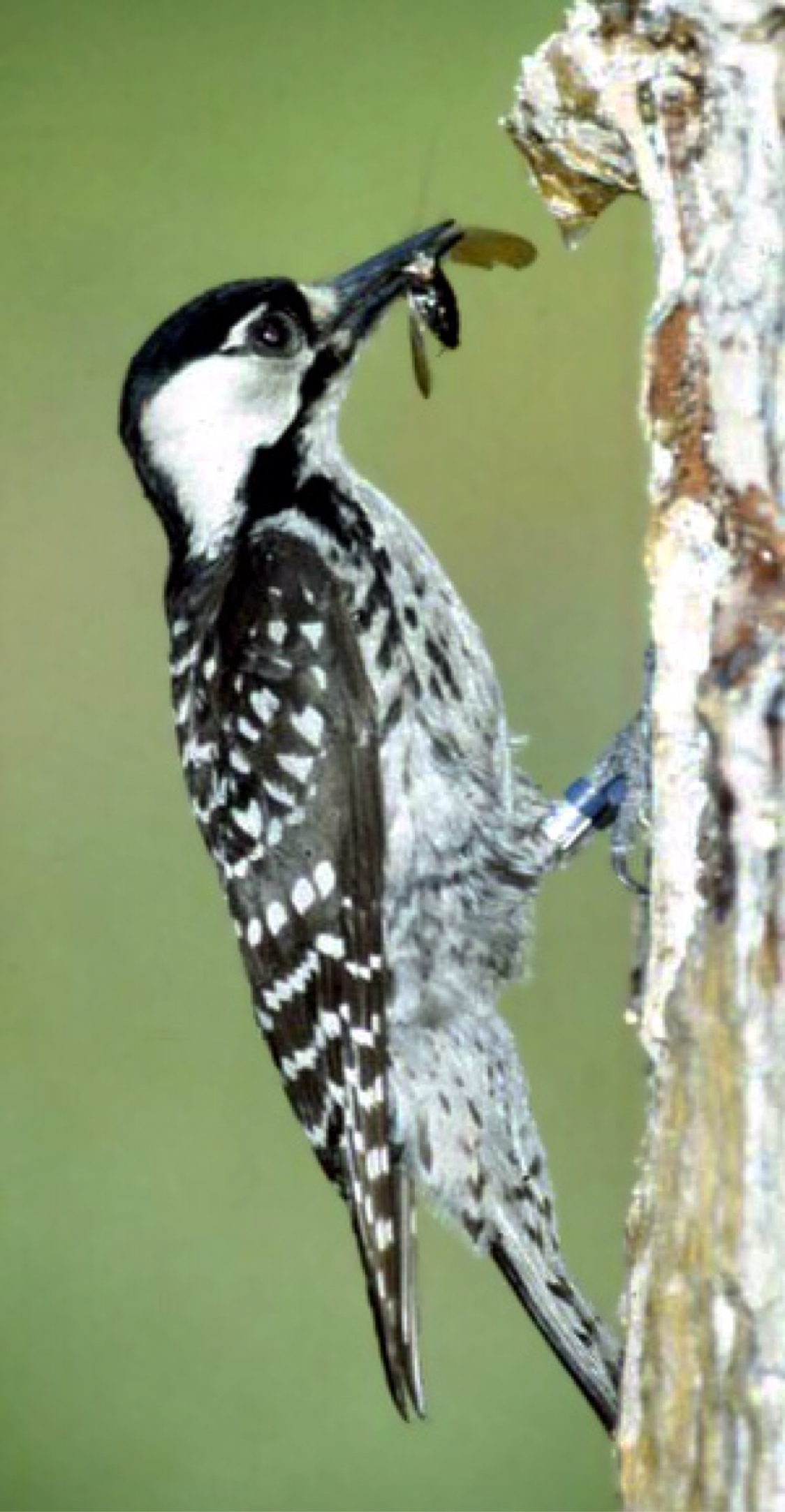 | Red-cockaded Woodpecker |
 | Northern Flicker |
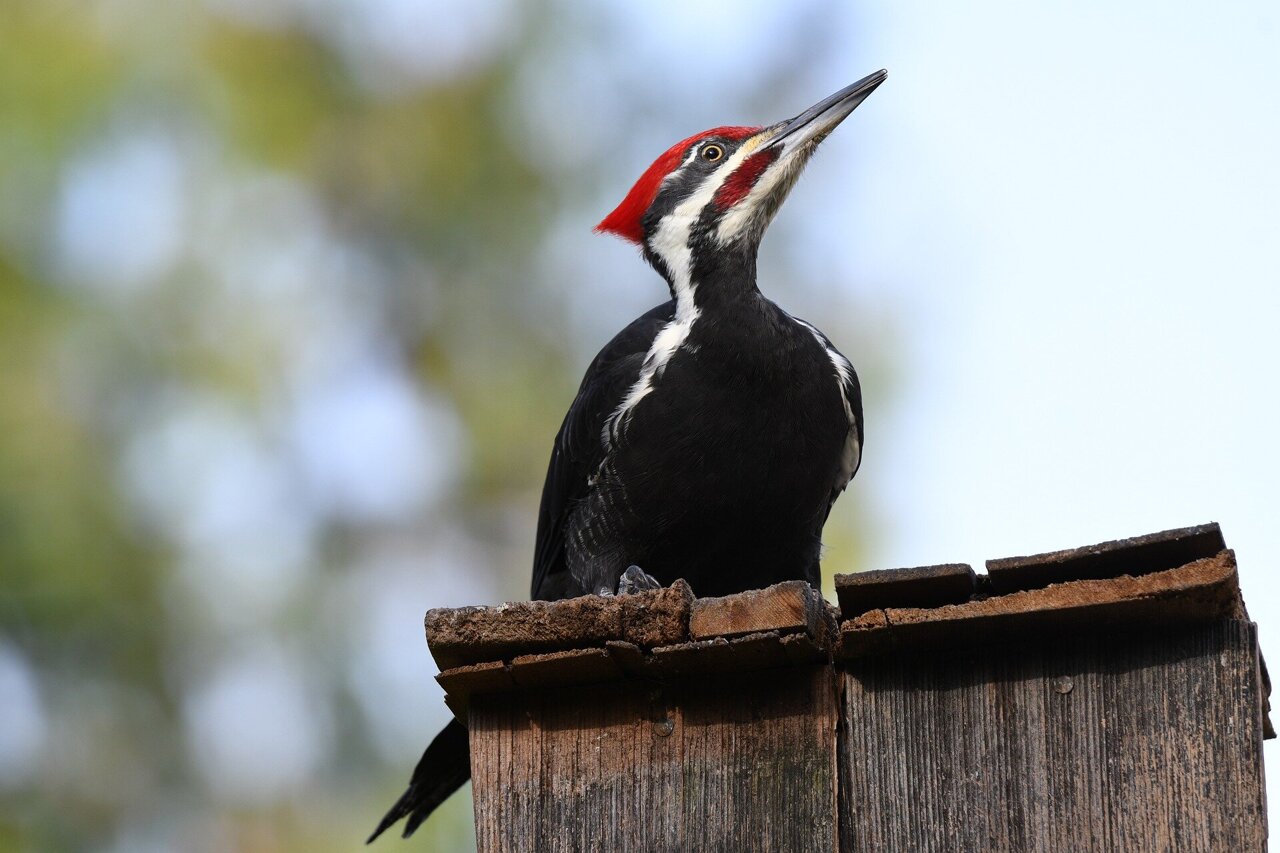 | Ivory-billed Woodpecker |
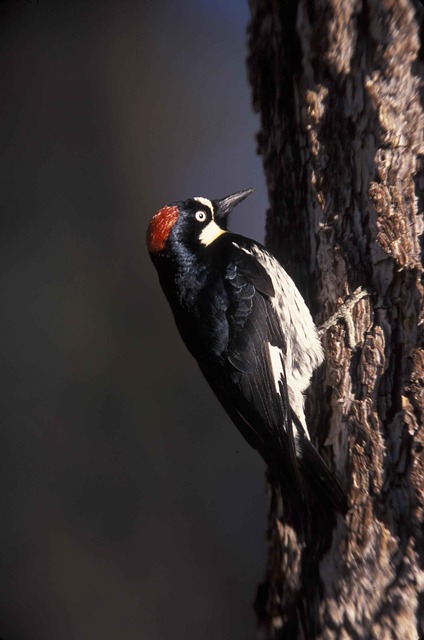 | Acorn Woodpecker |
Different Species of Woodpeckers in NC
In North Carolina, roughly ten woodpecker species may be found utilizing feeders or drumming loudly. Although most of these woodpeckers have similar characteristics, no two birds are exactly the same.
This quick guide attempts to describe the ten woodpecker species that you are ready to encounter throughout the state.
Hopefully, it will provide you with a good foundation for understanding the birds in the region.
The following are the most common woodpeckers in North Carolina.
1. Hairy Woodpecker
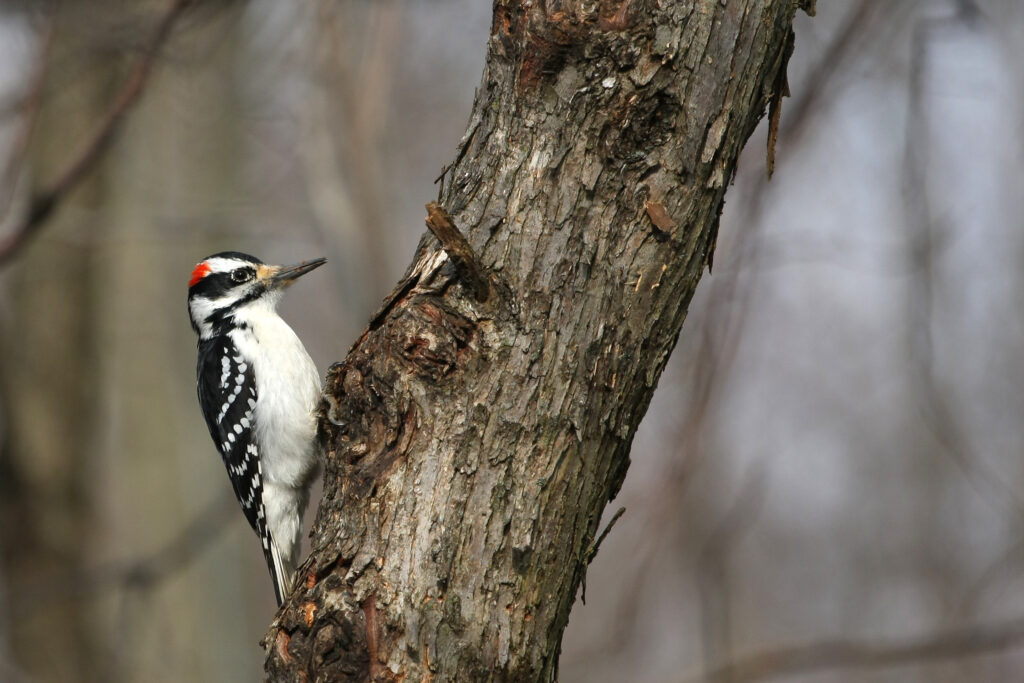
Having chosen North Carolina as their home base, these medium-sized birds may always be spotted at bird feeders.
If you wish to bring them to your backyard, offer them mixed seeds, nuts, or black oil sunflower seeds.
They may also be found in woodlands, where they devour caterpillars, bees, spiders, bugs, and other species.
Hairy Woodpeckers are distinguished by their lengthy beaks, which are nearly the length of their heads.
Their feathers feature a white and black checkered patterning, and the males have red streaks on the sides of their heads.
They also have a huge white band running down their backs.
| Scientific Name | Dryobates villosus |
| Wingspan | 13 inches to 16 inches |
| Length | 7 inches to 10 inches |
| Weight | 1.5 oz to 3.5 oz |
The hairy woodpecker might well be heard before it is seen. Although, their drumming and cries are quite strong.
2. Downy Woodpecker

The downy woodpecker seems to be the hairy woodpecker’s younger sibling. They appear identical at first sight.
An attentive observer will see that the downy is considerably smaller than that of the hairy one. This is particularly true in the beak.
As previously stated, the hairy’s beak is nearly as long as their head, but the downy’s beak is small, thin, and pointed.
Its straight-backed stance also distinguishes the downy.
| Scientific Name | Dryobates pubescens |
| Wingspan | 3.0 inches to 12 inches |
| Weight | 0.74 oz to 1 oz |
| Length | 5.5 inches to 7 inches |
Downy woodpeckers are considerably more likely than hairy woodpeckers to visit your backyard. They’ve also chosen North Carolina as their homeland.
They are visible all year, but notably in the wintertime. They can sometimes be seen flying in mixed flocks with chickadees and nuthatches throughout the cold season.
They do it in order to make it simpler for them to evade predators and look for food. In terms of nutrition, Downys follow the very same diet as Hairy.
You may attract these birds by using the same ingredients in your birdfeeders, such as mixed seeds, nuts, or black oil sunflower seeds. You may even practice identifying which is which when they come over.
3. Red-bellied Woodpecker
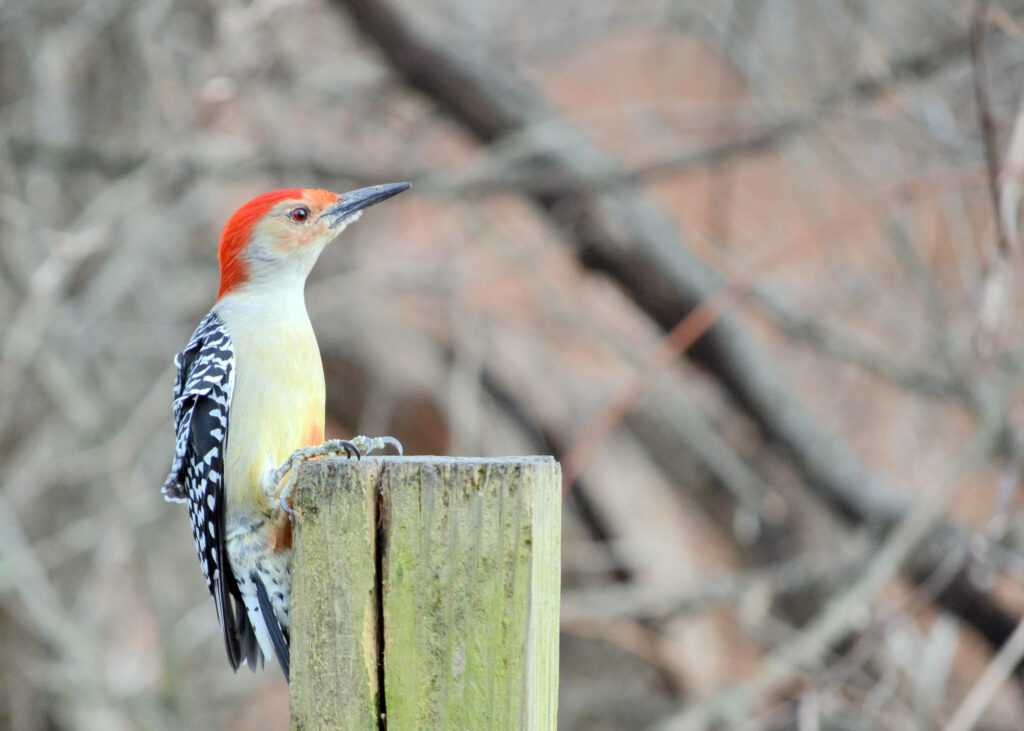
This woodpecker is distinguished by its vivid red feathered head and slight pink abdomen, making it simple to identify.
Due to the obvious way these birds are frequently positioned, hanging to trees, you are much more likely to identify such birds solely based on their head rather than their belly.
They choose tree trunks hidden from view in cavities to make their nests in with their partners. They sometimes will make their nest around an atypical home or telephone pole.
The Red-Bellied Woodpecker is well-known for its nonmigratory habits and long-term presence in North Carolina.
| Scientific Name | Melanerpes carolinus |
| Wingspan | 13 inches to 16.5 inches |
| Weight | 2.0 to 3.0 oz |
| Length | 8 inches to 9.5 inches |
In fact, this bird is by far the most abundant variety of woodpecker in the region, making it pretty simple to find it anywhere at any time of year.
These species have been reported to be more active towards the end of the winter while hunting for a partner, and they might occasionally disappear from sight when breeding begins in April.
Since these birds are plentiful in North Carolina, it is rather simple for residents to view them. The Red-Bellied Woodpecker prefers many of the woodlands of Georgia, South Carolina, and North Carolina.
They are reported to reside and reproduce in all of the major woods, making them easy to find if you recognize where to search.
Suet cakes are a wonderful way of attracting these birds to your backyard, but nuts and sunflower seeds are also an alternative because they feed similar to downy and hairy woodpeckers.
4. Red-headed Woodpecker
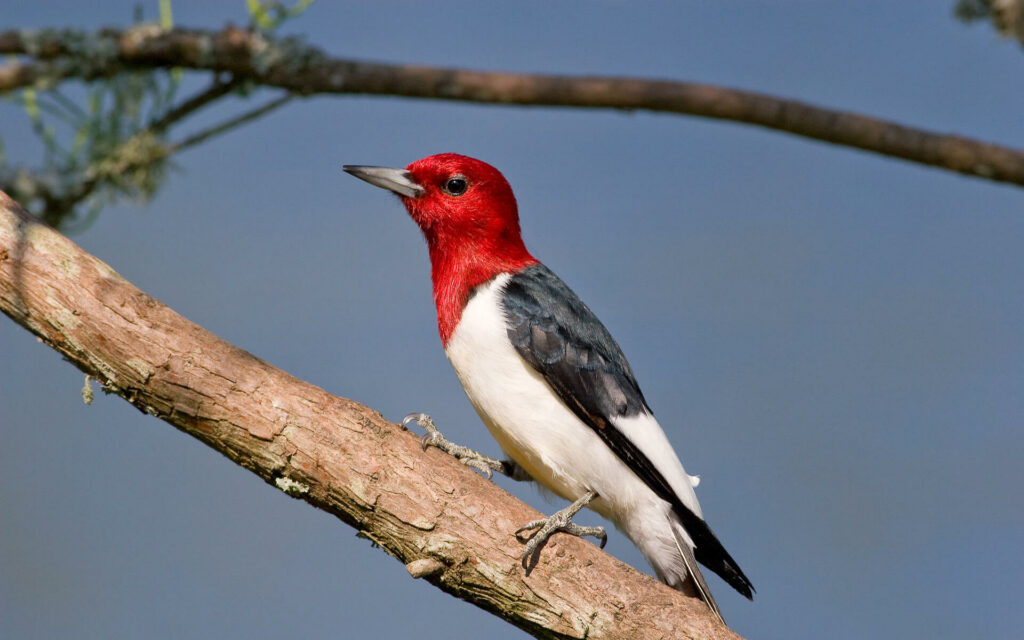
The red-headed woodpecker, another woodpecker that stays throughout all year, has some similarities with the red-bellied woodpecker.
However, it is much simpler to spot the difference here than it does with the hairy and downy woodpecker. A red-headed woodpecker may be identified by its vivid red head.
Their wings are half black, half white, with a snow-white breast. Their harsh shriek alerts you when they’re nearby, but they’re an uncommon sight these days. Because of habitat degradation, the population of these woodpeckers has declined during the last 60 years.
| Scientific Name | Melanerpes erythrocephalus |
| Wingspan | 13 inches to 16.5 inches |
| Weight | 2.0 to 3.0 oz |
| Length | 7.5 inches to 9.5 inches |
In the wintertime, red-headed woodpeckers will consume nuts, suet, and a variety of fruits from birdfeeders. Their hunting and survival strategies in the outdoors are distinct among woodpeckers.
They consume nuts, fruits, and insects like other woodpeckers, but they also grab insects in mid-air and seek them on the land, whereas most woodpeckers only catch insects on trees.
Red-headed woodpeckers are just so aggressive that they might damage the eggs of birds that live in their region. Beautiful birds, indeed, but also frightening ones.
5. Pileated Woodpecker

The Pileated Woodpecker is a popular bird among bird watchers due to its big size and colorful array of red feathers all over its head.
These unusual birds are expected to spend a significant amount of time ready for the breeding season. Male Pileated Woodpeckers may spend some time constructing the ideal nesting place in order to entice local female birds with the prospect of courting.
Birds will build sophisticated nests within tree holes, typically with many entrance points for ease and convenience. The Pileated Woodpecker is quite simple to locate in North Carolina.
However, these birds are active throughout the year. You will be seeing more of these throughout mating season.
| Scientific Name | Dryocopus pileatus |
| Wingspan | 26 inches to 30 inches |
| Weight | 9 oz to 12 oz |
| Length | 16 inches to 19 inches |
During the winter season, woodpeckers are extremely busy and noticeable as they look for a partner for the summer so that they might start to work producing babies. They are quite active during the day and may be seen flying across the air.
The Pileated Woodpecker is renowned for preferring forested regions. However, they do go out in North Carolina. Many individuals who live near natural areas have claimed to see these magnificent birds at the suet feeder in their gardens.
Even if the birds do not remain, you can tempt them to come by with a portion of food. These versatile birds have been found in a variety of locations and are notorious for returning to areas where they have been chased.
Damaged woods have caused them to leave their natural environment, but these devoted birds are quick to return whenever the coast is clear. Nuts, suet, and seeds are all welcome snacks for them if you wish to entice one to your yard.
6. Yellow-bellied Sapsucker

The yellow-bellied sapsucker is one of only our list’s birds that does not stay for the whole year. They visit over the winter season and leave as soon as spring arrives.
They are called from their pale-yellow bellies, although they may also be identified by bright red foreheads; males also have red around their necks.
Their wings and bodies are black and white, with a broad white streak going down both wings. These woodpeckers devour a lot of sap, as the name implies.
Then they dig a succession of little holes in the bark of trees to build a sap well, where they suck down the sap and any insects they catch.
| Scientific Name | Sphyrapicus varius |
| Wingspan | 13 inches to 16.5 inches |
| Weight | 1.5 oz to 2.0 oz |
| Length | 7.0 inches to 8.0 inches |
Yellow-bellied sapsuckers nest at the height of about 6,500 feet. You are unlikely to draw many visitors to your backyard, but if you provide suet cakes, you could get a few.
Young birch and maple trees could also draw them, and you may come across a few saplings. You may know by their rapid pounding or loud cries whenever they’re close.
7. Red-cockaded Woodpecker

These birds are titled from their red “cockades,” or streaks of crimson on the top part of their faces. However, this is primarily a male trait.
The crimson stripe might be difficult to spot among some of the seas of white feathers on their cheeks as well as the black that runs down their crest.
Their remaining bodies are defined by horizontal, white, and black stripes that fade on their bellies and contrast sharply on their backs.
In eastern North Carolina, red-cockaded woodpeckers dwell in family-sized groups within living pine trees.
| Scientific Name | Dryobates Borealis |
| Wingspan | 13.5 inches to 15 inches |
| Weight | 1.5 oz to 2 oz |
| Length | 8.0 inches to 9.0 inches |
They look for trees that have red heart fungi on them. The fungus makes it very easy for them to mold the wood.
They build vast caves into their trees to house their babies, and they punch holes inside the tree to allow the pitch to seep out, making it more difficult for tree-climbing creatures to access their nests.
If you put berries in your yard, you might be able to persuade one to visit. However, red-cockaded woodpeckers have been classified as an endangered species, and there are not that many left.
8. Northern Flicker

The Northern Flicker may be seen in North Carolina throughout the year. They become increasingly numerous in North Carolina throughout the winter season when Northern Flickers travel south after nesting.
Northern Flickers are recognized as yellow-shafted flickers in North Carolina because they have a flash of yellow in their tails and wings, a white patch on their rump during flying, and a red nape of something like the neck in the males.
They’re big brown woodpeckers having black-spotted feathers.
Northern Flickers have a piercing shriek and a loud ringing cry. They build their nests in tree crevices and hatch 5 to 8 white eggs.
They feed mostly beetles and ants, and also fruits and seeds, and are frequently observed digging them up using their bent beak.
| Length | 11.0 inches to 12.2 inches |
| Wingspan | 16.5 inches to 20.1 inches |
| Weight | 3.9 oz to 5.6 oz |
Northern Flickers are commonly observed in open woodlands, woodland borders, playgrounds, and suburbia. They are frequently found hunting for food on the ground.
Northern Flickers do not visit bird feeders as frequently as they do birdbaths, so investing in a beautiful pedestal birdbath or a warmed fountain for the winter is your greatest opportunity.
You can try to entice them by placing huge hoppers, suet cages, or platform feeders with black oil sunflower seeds, cracked corn, suet, safflower seeds, peanuts, millet, and hulled sunflower seeds.
You may also build a flicker-friendly nesting box and grow berry-producing plants like hackberries, bayberries, grapes, or elderberries to entice a mating couple.
9. Ivory-billed Woodpecker

These woodpeckers haven’t really been spotted in years. Although they used to thrive throughout the southern United States, habitat devastation in the nineteenth century resulted in very few of them remaining by the twentieth century.
In 2004, a miracle happened when another was discovered in eastern Arkansas for the first time in the twenty-first century.
It was the last time someone saw one, and the search for an ivory-billed woodpecker is still ongoing.
| Length | 18.1 inches to 21.1 inches |
| Weight | 15.1 oz to 20.1 oz |
| Wingspan | 29.5 inches to 31.5 inches |
The ivory-billed woodpecker was larger than a crow for a woodpecker. They were distinguished by their tall necks, small crests, and straight beaks. Their beaks were equally pale-ivory, and they possessed two white stripes down their back sides.
Their skin was primarily white. A red crest distinguished males, while females had a white crest. To locate food, they would be using their beaks to scrape the bark off trees in search of huge beetle larvae.
10. Acorn Woodpecker

Even though they’re not native to North Carolina, several acorn woodpeckers are kept under check at the Audubon Society chapter in Durham.
Their crest is brilliant red, which contrasts with their cream-white face and a little ring of black around their beaks.
Three additional white spots may be seen in flight, on either wing and one on their rump. The females’ crests are a considerably duller shade of crimson.
These woodpeckers consume a lot of acorns, as the name implies.
They literally stockpile them. They spend time looking for insects when they are not gathering acorns.
Unlike many woodpeckers, these species congregate in big groups and share mating territories.
| Length | 7.5 inches to 9.1 inches |
| Weight | 2.3 oz to 3.2 oz |
| Wingspan | 13.8 inches to 16.9 inches |
They make their homes in tree trunks or utility poles. That, though, is part of the issue. Acorn woodpeckers are threatened by urbanization because it lowers the number of suitable dwelling sites and generates smaller groups.
That’s why organizations like the Audubon Society try to keep these species protected as their habitat changes.
Conclusion
All woodpeckers perform crucial functions in our ecology, reducing insect populations and offering nesting holes for birds that cannot chisel their own nests.
North Carolina is fortunate to have ten distinct species of this bird, so whether you’re a local or simply passing through, keep a close eye out for one of the woodpeckers as mentioned above.
Commit to conserving these magnificent birds by limiting your use of plastic, turning off the lights at high-rise buildings during the night to avoid bird crashes, or doing something as easy as hanging yard feeders packed with bird-friendly nutrition.
FAQ
What is North Carolina's largest woodpecker?
If the Ivory-billed Woodpecker becomes disappears, the Pileated Woodpecker is still by far the biggest and also most striking woodpecker currently alive throughout the United States.
What entices woodpeckers to visit my home?
Drumming is a means of communication among woodpeckers. Because hard surfaces such as windows, your house’s eaves, tin roofs, or aluminum siding provide excellent amplifying, they frequently attract these feathery percussionists.
Is it unusual to come across a pileated woodpecker?
As per the North American Breeding Bird Study, Pileated Woodpeckers are quite frequent and plentiful, and their numbers have gradually grown from 1966 to 2019.
Which woodpecker is by far the most common?
The downy woodpecker seems to be the tiniest, most frequent, and widely distributed woodpecker. It has the same white-and-black plumage as the bigger hairy woodpecker.
Last Updated on March 22, 2023 by Lily Aldrin
